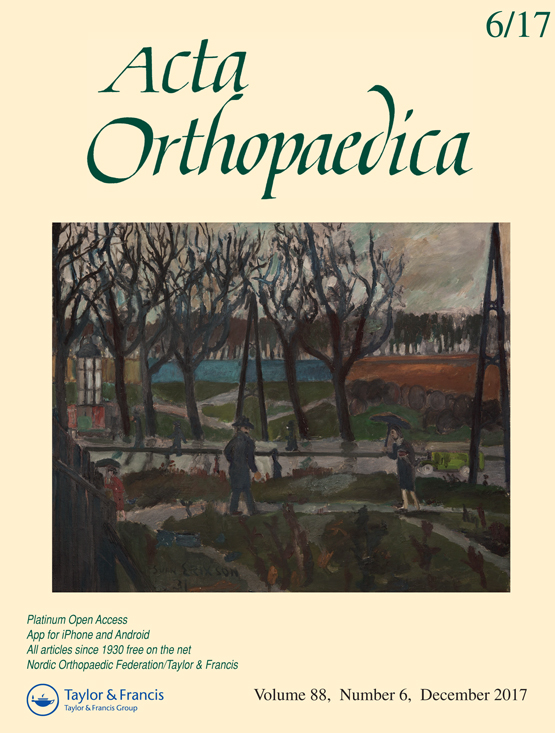A simple method for accurate rotational positioning of the femoral component in total knee arthroplasty
DOI:
https://doi.org/10.1080/17453674.2017.1362733Abstract
Background and purpose — There are many techniques for placing the femoral component in correct rotational alignment in total knee arthroplasty (TKA), but only a few have been tested against the supposed gold standard, rotation determined by postoperative computed tomography (CT). We evaluated the accuracy and variability of a new method, the clinical rotational axis (CRA) method, and assessed the association between the CRA and knee function. Patients and methods — The CRA is a line derived from clinical judgement of information from the surgical transepicondylar axis, the anteroposterior axis, and the posterior condylar line. The CRA was used to guide the rotational positioning of the femoral component in 80 knees (46 female). At 3 years follow-up, the rotation of the femoral component was compared with the CT-derived surgical transepicondylar axis (CTsTEA) by 3 observers. Functional outcome was assessed with the Knee Injury and Osteoarthritis Outcome Score (KOOS), the Oxford Knee Score (OKS) and patient satisfaction (VAS). Results — The mean (95% CI) rotational deviation of the femoral component from the CTsTEA was 0.2° (–0.15°–0.55°). The standard deviation (95% CI) was 1.58° (1.36°–1.85°) and the range was from 3.7° internal rotation to 3.7° external rotation. No statistically significant association was found between femoral component rotation and KOOS, OKS, or VAS. Interpretation — The CRA method was found to be accurate with a low grade of variability.Downloads
Download data is not yet available.
Downloads
Published
2017-11-02
How to Cite
Aunan, E., Østergaard, D., Meland, A., Dalheim, K., & Sandvik, L. (2017). A simple method for accurate rotational positioning of the femoral component in total knee arthroplasty. Acta Orthopaedica, 88(6), 657–663. https://doi.org/10.1080/17453674.2017.1362733
Issue
Section
Articles
License

This work is licensed under a Creative Commons Attribution-NonCommercial 3.0 Unported License.
Acta Orthopaedica (Scandinavica) content is available freely online as from volume 1, 1930. The journal owner owns the copyright for all material published until volume 80, 2009. As of June 2009, the journal has however been published fully Open Access, meaning the authors retain copyright to their work. As of June 2009, articles have been published under CC-BY-NC or CC-BY licenses, unless otherwise specified.







